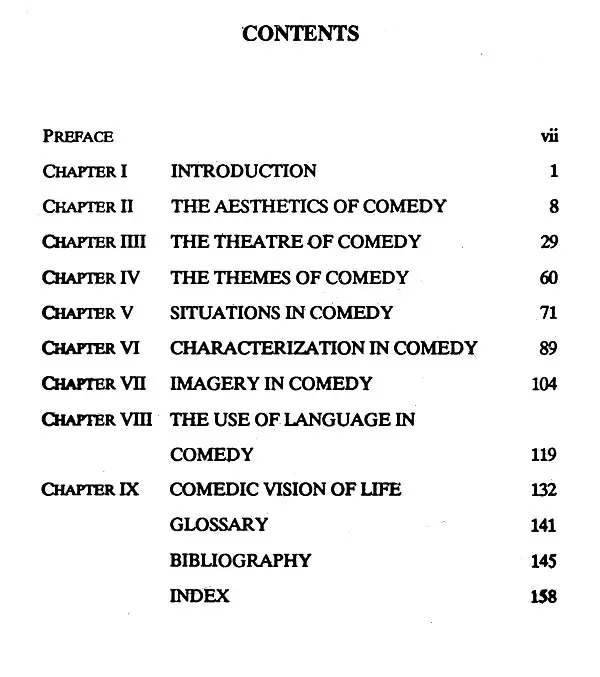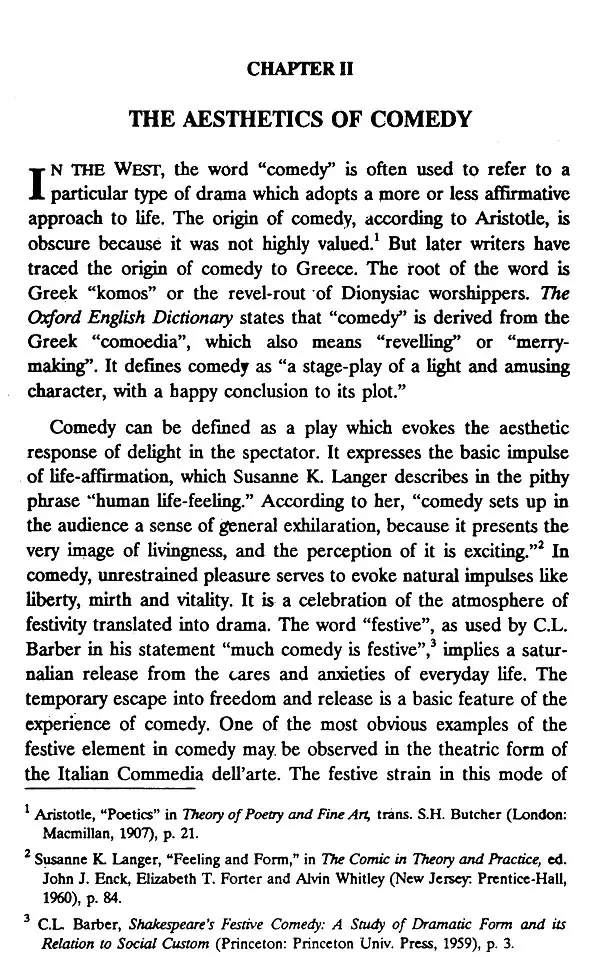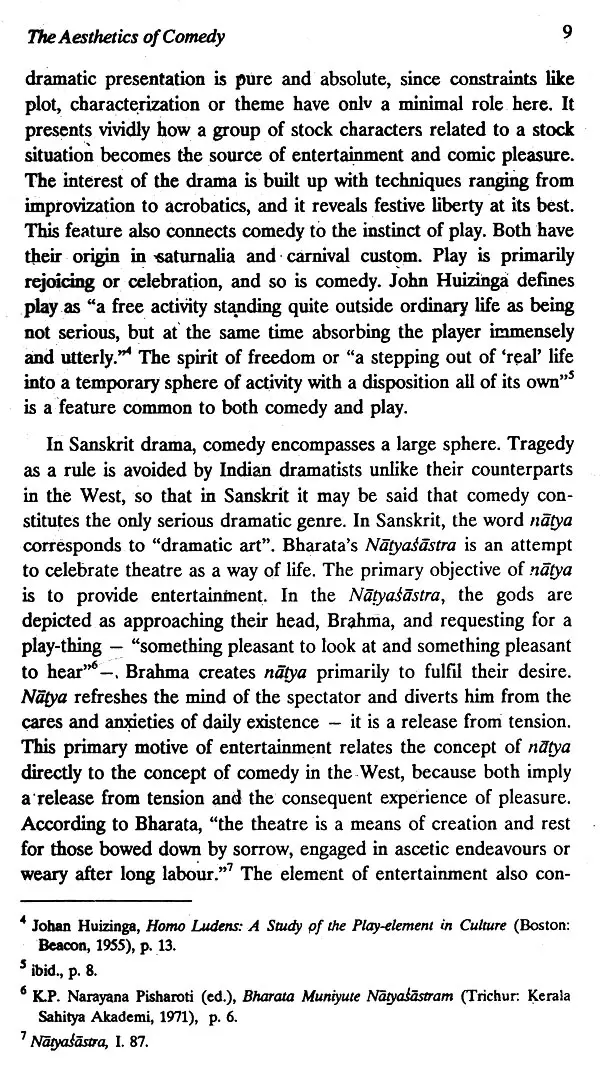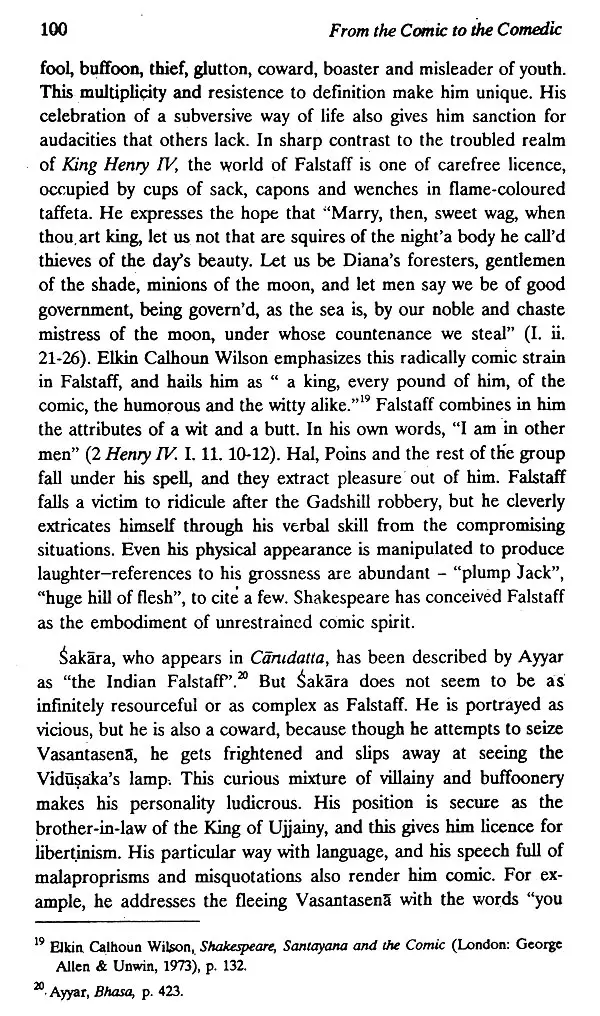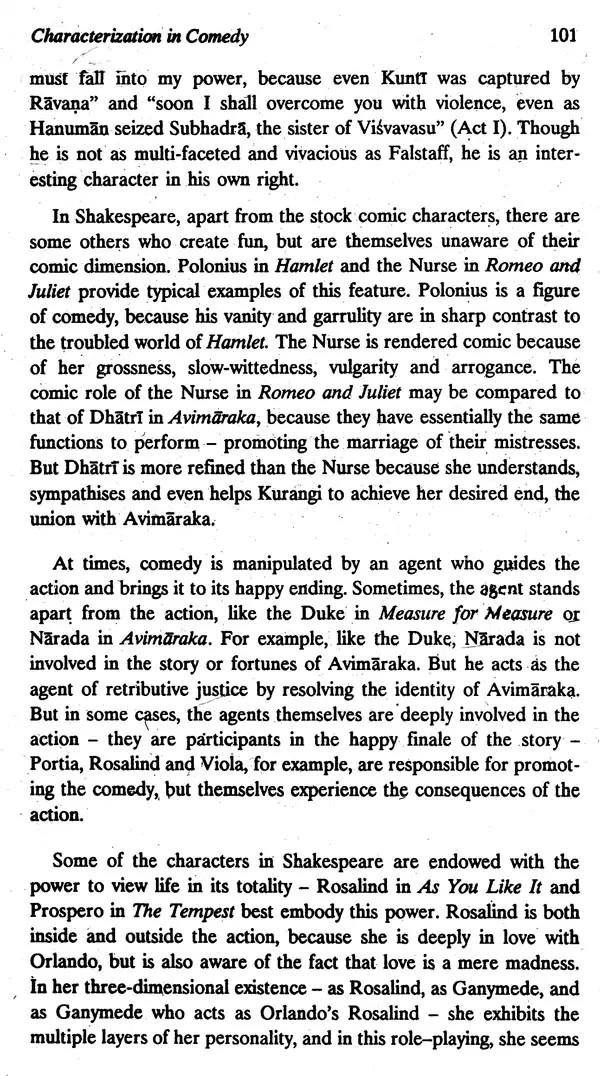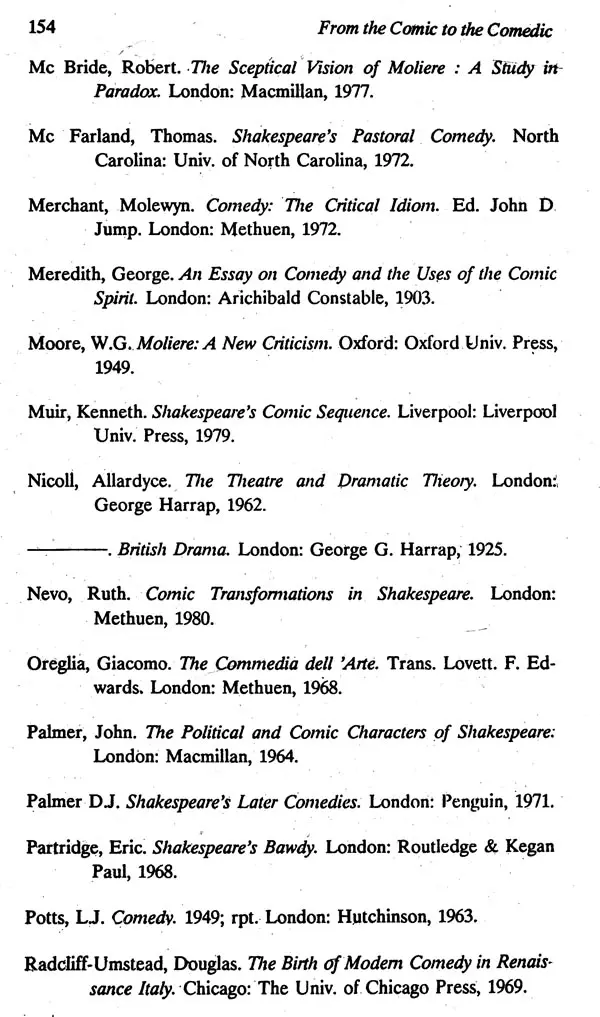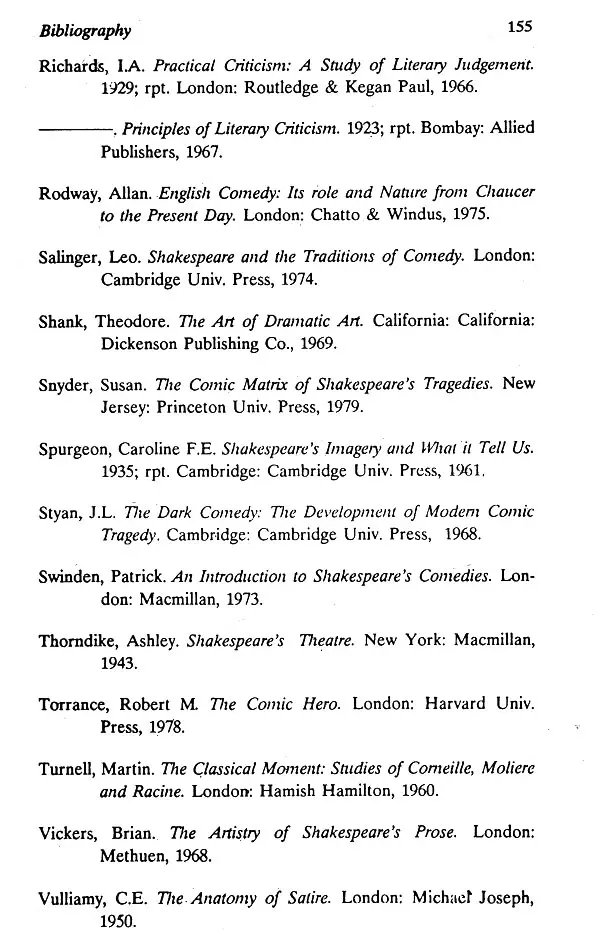
From the Comic to the Comedic : The Traditions of Comedy of Bhasa and Shakespeare
Book Specification
| Item Code: | UAF762 |
| Author: | Sudha Gopalakrishnan |
| Publisher: | Sharada Publishing House, Delhi |
| Language: | English |
| Edition: | 1993 |
| ISBN: | 8185616116 |
| Pages: | 171 |
| Cover: | HARDCOVER |
| Other Details | 9.00 X 6.00 inch |
| Weight | 340 gm |
Book Description
A comparative study of classical Indian and Western drama with special reference to comedy reveals interesting similarities and differences between the two in respect of aesthetic theory, theatric practice and elements of dramatic composition.
The common ground between Western and Sanskrit theatre relates to the use of stage= devices like pantomime, off-stage voices, soliloquy and play-within-the-play, as well as histrionic elements like dance and music, and the exaggerated costume and makeup of the characters. But apart from these, Indian drama, as outlined in Natya Sastra and maintained by stage, performances through the centuries is markedly different from the Western, because while the latter mostly depends on realistic devices the former is basically a stylised mode of theatre which caters to an idealised audience. In Western drama, the interest of the audience in watching a play lies in the effective rendering of the dialogue, so that the verbal text is of primary value. But in traditional Sanskrit dramatic practice, the actor is encouraged to resort to an elaborate method of improvisation, using vocal and / or gestural expression, supplemented by the appropriate movements of the face and other parts of the body as well as by musical accompaniment. The written text has therefore only a minimal importance here.
The method of dramatic composition of the comedies in both Western and Sanskrit traditions also bears striking similarities and divergences. These may be seen irr the methods of employing plot, situation and themes as well as in the creation of character and the use of language. In the present study, the comedies of Shakespeare and Mina have been selected for closer analysis, because they seem to encompass within their respective spheres a wide variety of levels and interpretations of Western and Indian comedy. The two dramatists also seem to share a common underlying philosophy of comedy, namely, a joyous involvement in the process of living.
Dr. Sudha Gopalakrishnan (b. 1954 ), a Ph.D from the University of Kerala, has worked extensively in the areas of comparative drama, classical Indian theatre, and Indian and English literature. She is also a trained dancer in Kathakali.
Dr. Gopalakrishnan is currently working in Indira Gandhi National Centre for the Arts as Project Officer, Encyclopaedia of the Arts. Earlier she was in Sahitya Akademi as Assistant Editor, Encyclopaedia of Indian Literature.
A glossary of the terms in Sanskrit used in this thesis is given at the end.
I would like to acknowledge my gratitude to the University of Kerala which offered me a research fellowship to undertake this study. I am grateful to Dr. K. Ayyappa Paniker, my professor and guide, for his invaluable help and suggestions. I am indebted to Shri Satkari Mukhopadhyaya, the members of his family and Shri S. Jithendra Nath for their help in bringing out this book. It would be audacious on my part to attempt to thank Shri D. Appukkuttan Nair who provoked and sustained my interest in classical theatre with parental care.
A COMPARATIVE study between Western and Sanskrit theatre seems relevant in the present situation, when writers and commentators in the field of aesthetics in general and drama in particular are attempting to establish many points of correspondence between them. At a superficial glance, the differences between the two are more striking than the similarities. Sanskrit drama, unlike the Western, is not today a live mode of expression. Montgomery Schuyler records that "the age of Sanskrit drama may roughly be given as extending from A.D. 400 to 1100. This period does not, of course, include the earliest efforts at dramatic composition, nor take in a large number of late and inferior plays."1 It does not take into account the possible dates of dramatists before Sudraka, like those of Asvaghosa and Bhasa. Bhasa's plays came to light as late as 1912 with Ganapati Sastri's publication in Trivandrum of the thirteen plays ascribed to him. A.B. Keith comments that "the first century B.C. can with fair certainty be assumed to be the very latest period at which the appearance of a genuine Sanskrit drama can be placed."2 Thus, according to the data available today, the best of Sanskrit drama seems to have been written approximately during the first thousand years of the Christian era. In the West, drama had its origin from ancient Athens, and developed as a full-fledged branch of literature by the association and infiltration of various cultures and systems of thought. As a result, the religious, moral and aesthetic precepts of associated with classical Western drama have tended to be greatly diversified. Even today, Western drama is being subjected to be a lot of experimentation and transformation, through the use of new forms and precepts, thus reflecting the conflicting drives and struggles of Western thought. But in Sanskrit theatre as well as in ancient Indian society, there seems to have been an accepted code of dhama or moral and ethical code. J.A.B. Van Buitenen observes that in the classical drama of India, "there is a curious intermixture of the simplicities of dharmic life and the complexities of courtly or urban life.”3 The dramatist thus draws his plot and characters out of the hierarchic scheme of this society. But, in spite of these differences in age and culture between the two dramatic traditions, there are striking similarities which, according to. Henry W. Wells, "mark the essentials of all good drama.4 The similarities may be observed in the areas of aesthetic theory, theatrical practice and elements of dramatic composition.
In considering the nature of aesthetic experience, the importance of language as a medium of expression should be taken into account. The word 'language' in this context applies to all the verbal and non-verbal elements that aid communication like speech, gesture, painting, music, which are all included in the word. The connection between a word and its sound has been subjected to analysis by thinkers in the West as well as in India. G. Hanumantha Rao finds a resemblance between Merleau-Ponty's theory of expression and Bhartrhari's theory of word. According to him, "Merleau-Ponty considers original expression alone as true expression. In cases of all original expression which art is presumed to be, the original thought is discovered only when it bursts into expression."5 Bhartrhari explains this communication through his theory of sphota according to him, sphota is the eternal and imperceptible elements of sounds and words and the real vehicle in communication, which bursts or flashes on the mind when a sound is uttered. The full import of a sentence or a word strikes the hearer with a sudden force after the whole extent of the sound is uttered - thus invariably a connection is established between the speaker and the hearer. Bhartrhari speaks of the tonal meaning in artistic expression which is similar to the reverberation of a bell and calls it dhvani (Vakyapadiya,1.102).5a Dhvani may roughly be described as the suggestive power in poetry. In a poem, the sound as well as the superficial sense becomes subordinated to the suggested sense, which Anandavardhana calls dhvani.6

